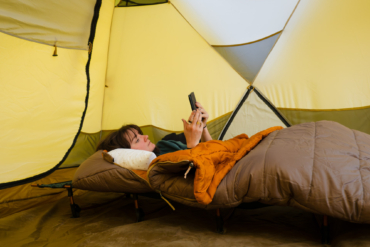A few years ago, I didn’t know what “dispersed camping” meant and had no idea there were places across the country where camping was utterly free. And I wasn’t alone. According to the 2024 report from The Dyrt, 39% of the U.S. population doesn’t know they can camp for free, and 40% know they can but have never tried it.
Now, after more than a year on the road (and hundreds of nights spent camping across North America), I can say without a doubt that dispersed camping is my preference. It’s becoming even more important with the rising cost of campsites. The same report from The Dyrt found that 45% of camping properties raised their rates in 2023, and 36% plan on raising them for 2024. So, it’s only getting more expensive.
Not only will camping for free save major cash, but by getting off the beaten path, you can also discover some of the coolest spots and have more space to yourself. It’s less developed and more isolated, and it just feels more authentic.
Dispersed Camping 101: Never Pay for a Campsite Again
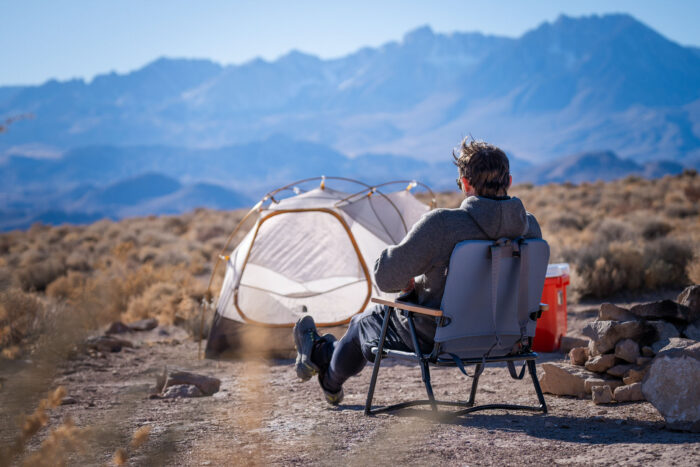
Dispersed camping (also called primitive camping, wild camping, boondocking, or dry camping) is not about luxurious amenities. There are usually no bathrooms, showers, or water pumps. So bring plenty of water or ensure you’re camped next to a usable water source.
Also, because a dispersed camp spot cannot be reserved, plan to arrive with plenty of daylight. Researching ahead of time helps, but finding an ideal campsite can still take time. A search that’s fun in the daylight can be miserable in the dark.
Often, you can find dispersed campsites where people have clearly camped before. There will usually be a fire ring, signs of parked cars, and tent footprints. You can also create your own campsite in dispersed camping areas. However, permanently modifying the environment is generally frowned upon. Do your best to Leave No Trace.
Find Your Free Camp Site
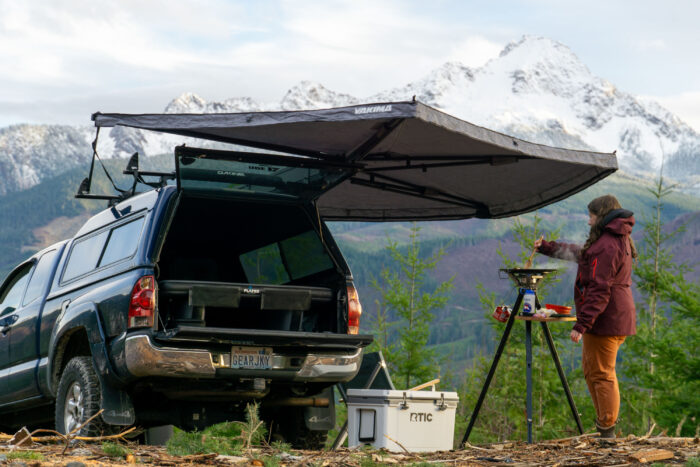
In the United States, you can disperse camp in any of the 247.3 million acres of Bureau of Land Management (BLM) areas and most national forests for free. You can also find free camping opportunities in some Wildlife Management Areas (WMA), state forests, and grasslands.
Certain high-use areas or sensitive habitats have “no camping” signs. Other environments have specific ways to minimize damage, like avoiding the living biological crusts of desert environments or fragile plants of high alpine areas. However, the majority of public lands are available for respectful use.
Below is my favorite strategy to find an epic camp spot.
Scour Google Maps or other resources. Use a computer and look for the green areas demarcated as national forests or BLM (a list of map and campsite search sources is in the next section). Be sure to respect private land at the fringes. Take note of what’s available in the region you plan to explore and get an idea of access roads and landscapes.
Use a paper map. Some wild spaces don’t show up on Google Maps. And once you’ve gotten off the beaten path, cell service may not be available. This is where paper maps come in handy. Choose one of the options listed below or stop by the ranger station for a local map. These will help you identify roads, trails, potential obstacles, and water sources.
Look up rules and regulations for the area you plan to visit.
Talk to a ranger. Call or stop by the local National Forest or BLM office. These folks are full of helpful information and are usually happy to share advice. Get firsthand tips on where to go and what to avoid.
Head into the wilds with a sense of adventure and an open mind. The spot you picked on the map might be perfect or might not. Remember, the journey is the destination. If it was just about rolling in and setting up the tent; plenty of campgrounds are meant for that.
How to Find Dispersed Camping

Camping away from designated campgrounds takes extra effort. Luckily, there are great maps and campsite-searching resources to help you find the right spot. Here are a few of our favorites.
National Forest Service Motor Vehicle Use Maps (MVUM): The NFS maintains these maps so people know what vehicles are legally allowed in what areas. But MVUMs are also extremely useful for visualizing where National Forest boundaries are and what roads you can access for dispersed camping. They have no topo lines, so they’re best used with a more detailed geographical map.
CalTopo: Made famous by backcountry skiers, CalTopo is a map app that you can filter by slope angles, contours, geology, sun exposure, cell coverage, recreation, structures, and much more. Among the many layers the app comes with for free (there is also a subscription option) are “public lands” and MVUMs.
The Dyrt: This campsite searching app scans popular dispersed camping areas and established sites in State and National Parks and privately owned campgrounds. It won’t show you everywhere you can disperse camp, but it will direct you to sites people have listed.
Campendium: A helpful compilation of free campsites.
Free Campsites: Users can add campsites, reviews, and tips on free campsites across the U.S. Sites vary from noisy parking lots to pristine wilderness gems.
onX Maps: This app, designed primarily for hunting, is a treasure trove of public land information. Navigate public land interspersed with private land and avoid trespassing. OnX was first designed for hunters, but it has since developed options specifically for backcountry skiing, climbing, and biking. Like CalTopo, it has layers that designate government land and private land.
Other Options to Camp for Free
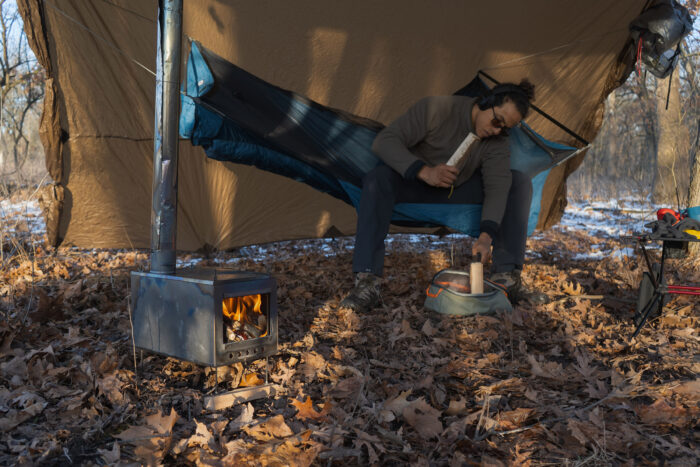
While BLM and national forests are some of the best places to find free camping, they aren’t the only ones. If you’re driving an RV or van or sleeping in your car, you can always park at rest areas, truck stops, big box stores (like Walmart), casinos, and sometimes city parks or visitor centers.
Private land also presents an excellent option for free camping — if you own it or know someone who does and have permission from them. Trespass camping is possible, but it’s a risky game.
Know Before You Go
Do you need a fire permit? Are there seasonal restrictions? How are the road conditions?
Droughts cause fire bans, hunting can form seasonally crowded areas, and rain creates impassable roads. It’s better to know before you go. Give the ranger a call.
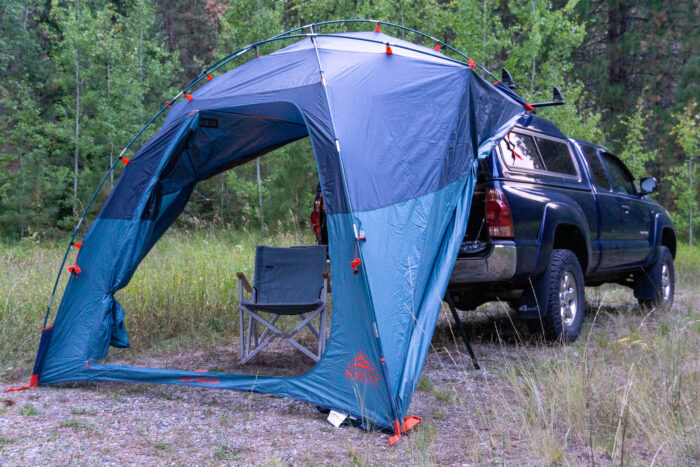
Leave No Trace
Follow the seven principles of Leave No Trace and keep rugged places pristine and wild for future adventurers. Generally, the philosophy is, “Take only pictures, leave only footprints.”
Park only where legal and safe, and don’t create new paths with vehicles. If you want to have a campfire, try to find a dispersed campsite that already has a fire ring — avoid building your own. You should be 200 feet away from a water source to use the bathroom. If you defecate, dig a hole at least 6 inches deep and cover it when you’re done. The goal should be to leave the place without any evidence of your visit.
Bring a Paper Map

Cellphone coverage is unreliable and often nonexistent once you get off the beaten path. This is where paper maps become invaluable. And even in cell range, it’s hard to beat the detail and information provided in a quality map.

Benchmark Road and Recreation Atlas: These comprehensive, detailed atlases cover entire states. They take up some space at 11 by 16 inches but provide plenty of helpful information. This includes public lands, updated road conditions, campgrounds, and boating access. They are a must-have for epic road trips and long-term life on the road.

National Geographic National Forest map: If you know a particular area you plan to visit, grab a Trails Illustrated map. They provide detailed info on campgrounds, trails, and local topography. Plus, NatGeo makes these out of sturdy, waterproof material. You can easily stick them in your pack when you leave the car (and cell service) behind.

Free maps: Most ranger stations have free maps of the area. Swing by when you drive into the forest and see what’s available. If nothing else, they’ll have a large map on the wall. Snap a picture with your phone, and at the very least, you’ll have a reference when you get out of cell range.
Frequently Asked Questions








